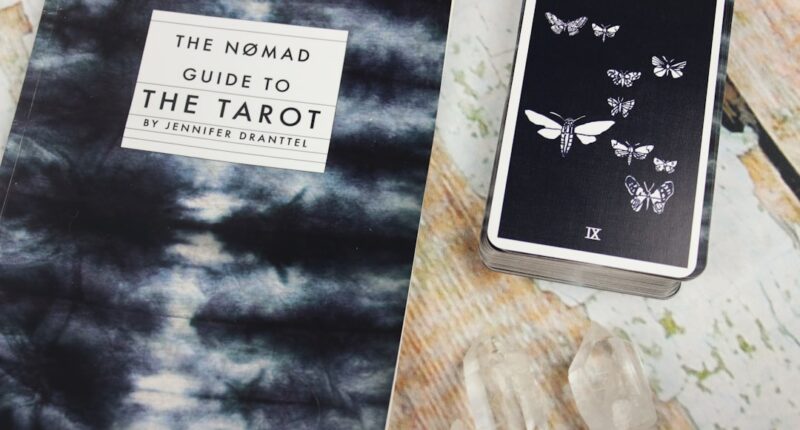Non-fungible tokens (NFTs) have taken the digital world by storm, but what exactly are they and how do they work? NFTs are unique digital assets that represent ownership or proof of authenticity of a specific item or piece of content, such as artwork, videos, music, or even tweets. Unlike cryptocurrencies like Bitcoin or Ethereum, which are fungible and can be exchanged on a one-to-one basis, NFTs are non-fungible, meaning each one is unique and cannot be exchanged on a like-for-like basis.
NFTs are built using blockchain technology, which is a decentralized and distributed digital ledger that records transactions across multiple computers. This technology ensures that each NFT is one-of-a-kind and cannot be replicated or replaced. When someone purchases an NFT, the ownership and transaction details are recorded on the blockchain, providing a transparent and immutable record of ownership. This gives creators and collectors confidence in the authenticity and scarcity of the NFT. Additionally, NFTs can be bought, sold, and traded on various online marketplaces, making them a valuable asset for creators and collectors alike.
In summary, NFTs are unique digital assets that represent ownership or proof of authenticity of a specific item or piece of content. They are built using blockchain technology, which ensures their uniqueness and provides a transparent and immutable record of ownership. NFTs can be bought, sold, and traded on online marketplaces, making them a valuable asset for creators and collectors in the digital space.
Step-by-Step Guide to Creating Your Own NFT
Interested in creating your own NFT but not sure where to start? Here’s a step-by-step guide to help you navigate the process:
1. Choose Your Content: The first step in creating an NFT is to choose the content you want to tokenize. This could be artwork, music, videos, or any other digital content that you have created.
2. Select a Blockchain Platform: Once you have your content ready, you’ll need to select a blockchain platform to create your NFT. Ethereum is currently the most popular choice for creating NFTs, but there are other platforms like Binance Smart Chain and Flow that also support NFT creation.
3. Mint Your NFT: After selecting a blockchain platform, you can use an NFT marketplace or platform to “mint” your NFT. Minting an NFT involves uploading your content to the platform, adding details such as the title, description, and any royalties you want to receive from future sales.
4. Set Up Your Wallet: To create and sell NFTs, you’ll need a digital wallet that is compatible with the blockchain platform you’ve chosen. This wallet will store your NFTs and allow you to buy, sell, and trade them on various marketplaces.
5. List Your NFT for Sale: Once your NFT is minted and stored in your digital wallet, you can list it for sale on various NFT marketplaces. Be sure to promote your NFT on social media and other channels to attract potential buyers.
By following these steps, you can create and sell your own NFTs on the blockchain, allowing you to showcase and monetize your digital creations in the growing NFT space.
NFT Jobs: Exploring Opportunities in the NFT Industry
The rise of NFTs has created a range of new job opportunities in the digital space. From artists and creators to developers and marketers, there are various roles available in the NFT industry for those looking to capitalize on this emerging market.
1. NFT Artist: As an NFT artist, you can create and sell digital artwork as NFTs on various online marketplaces. This role allows you to showcase your creativity and monetize your art in a new and innovative way.
2. Blockchain Developer: Blockchain developers play a crucial role in creating and maintaining the infrastructure that supports NFTs. They work on building and optimizing blockchain platforms to ensure the smooth creation and trading of NFTs.
3. NFT Marketer: NFT marketers help creators promote their NFTs and reach potential buyers through social media, influencer partnerships, and other marketing channels. This role is essential for driving visibility and sales for NFT creators.
4. NFT Consultant: As an NFT consultant, you can provide guidance and expertise to individuals and businesses looking to enter the NFT space. This could involve advising on NFT creation, sales strategies, legal considerations, and more.
5. NFT Platform Operator: Operating an NFT marketplace or platform requires managing listings, transactions, and user interactions. This role involves overseeing the day-to-day operations of an NFT platform to ensure a seamless experience for creators and collectors.
These are just a few examples of the diverse job opportunities available in the NFT industry. As the market continues to grow, new roles and opportunities are likely to emerge, making it an exciting space for those looking to pursue a career in the digital realm.
NFT Artists: How to Showcase and Sell Your Art as NFTs
| Artist | Number of NFTs Sold | Average Price | Total Earnings |
|---|---|---|---|
| Alice Smith | 25 | 0.5 ETH | 12.5 ETH |
| Bob Johnson | 15 | 1 ETH | 15 ETH |
| Charlie Brown | 30 | 0.8 ETH | 24 ETH |
For artists looking to showcase and sell their work as NFTs, there are several key steps to consider:
1. Create Unique and Compelling Artwork: The first step in selling art as NFTs is to create unique and compelling artwork that will resonate with potential buyers. Whether it’s digital paintings, illustrations, or animations, your art should stand out in the competitive NFT market.
2. Choose the Right Platform: There are numerous online marketplaces and platforms where you can sell your art as NFTs, such as OpenSea, Rarible, and Foundation. Research these platforms to find the best fit for your art based on factors like fees, audience reach, and community engagement.
3. Market Your Art: Once your art is listed as an NFT, it’s essential to market it effectively to attract potential buyers. Utilize social media, artist communities, and other channels to promote your art and engage with collectors.
4. Set Fair Pricing: When pricing your art as an NFT, consider factors like the uniqueness of the piece, your reputation as an artist, and current market trends. Setting fair pricing can help attract buyers while ensuring you receive fair compensation for your work.
5. Engage with Your Audience: Building a strong relationship with your audience can help drive interest in your art as NFTs. Engage with collectors through social media, virtual events, and other channels to build a community around your work.
By following these steps, artists can effectively showcase and sell their art as NFTs, tapping into new opportunities for monetization and exposure in the digital art world.
NFT News: Staying Updated on the Latest Trends and Developments in the NFT Space
Staying updated on the latest trends and developments in the NFT space is crucial for creators, collectors, and industry professionals alike. Here are some key ways to stay informed about NFT news:
1. Follow Industry Publications: There are several online publications and blogs dedicated to covering news and trends in the NFT space. Following these sources can provide valuable insights into market developments, new projects, and emerging trends.
2. Join Online Communities: Engaging with online communities such as Discord servers, Reddit forums, and social media groups can help you stay connected with other individuals interested in NFTs. These communities often share news, updates, and discussions about the latest happenings in the industry.
3. Attend Virtual Events: Many virtual events, conferences, and webinars focus on topics related to NFTs and blockchain technology. Participating in these events can provide access to expert insights, panel discussions, and networking opportunities within the industry.
4. Monitor Social Media: Following key figures in the NFT space on social media platforms like Twitter can provide real-time updates on news, announcements, and discussions related to NFTs.
5. Subscribe to Newsletters: Many organizations and individuals curate newsletters focused on NFT news and developments. Subscribing to these newsletters can ensure you receive regular updates directly to your inbox.
By leveraging these strategies, individuals can stay informed about the latest trends and developments in the fast-paced world of NFTs, enabling them to make informed decisions about their involvement in the industry.
Marketing Your NFT: Strategies for Promoting and Selling Your NFTs

Effectively marketing your NFT is crucial for attracting potential buyers and maximizing sales. Here are some strategies for promoting and selling your NFTs:
1. Build a Strong Online Presence: Establishing a strong online presence through social media platforms like Twitter, Instagram, and TikTok can help you reach a wider audience of potential buyers for your NFTs.
2. Collaborate with Influencers: Partnering with influencers or well-known figures in the NFT space can help increase visibility for your art or collectibles. Influencers can promote your work to their followers, driving interest in your NFTs.
3. Create Teasers and Previews: Generating anticipation for your upcoming NFT releases by sharing teasers or previews of your work can build excitement among potential buyers.
4. Offer Limited Editions or Exclusivity: Creating limited edition or exclusive NFT drops can drive demand for your work by creating a sense of scarcity and exclusivity among collectors.
5. Engage with Your Audience: Building a community around your art or collectibles by engaging with your audience through social media interactions, virtual events, or exclusive content can foster loyalty among collectors.
By implementing these marketing strategies, creators can effectively promote their NFTs and attract potential buyers in the competitive digital marketplace.
Navigating the Legal and Ethical Considerations of NFT Creation and Sales
As with any emerging industry, navigating the legal and ethical considerations of NFT creation and sales is essential for creators and collectors alike. Here are some key considerations to keep in mind:
1. Copyright and Intellectual Property Rights: When creating or selling art as NFTs, it’s crucial to ensure that you have the appropriate rights to the content being tokenized. This includes obtaining permission from any collaborators or subjects depicted in the artwork.
2. Smart Contract Terms: Smart contracts govern the terms of sale for an NFT, including details like royalties for future sales. Understanding these terms is important for both creators and buyers to ensure fair compensation and clear ownership rights.
3. Tax Implications: Selling or trading NFTs may have tax implications depending on your jurisdiction. It’s important to understand the tax obligations associated with buying or selling NFTs to avoid any legal issues.
4. Environmental Impact: The energy consumption associated with blockchain technology used for creating and trading NFTs has raised concerns about its environmental impact. Considerations around sustainability should be taken into account when participating in the NFT space.
5. Scams and Fraud: Due diligence is essential when buying or selling NFTs to avoid falling victim to scams or fraudulent activities within the space.
By staying informed about these legal and ethical considerations, individuals involved in the creation and sale of NFTs can navigate the industry responsibly while mitigating potential risks or liabilities.
In conclusion, understanding what NFTs are and how they work is essential for anyone looking to enter this rapidly growing industry. From creating your own NFT to exploring job opportunities within the space, there are numerous ways to get involved in this exciting digital landscape. Staying updated on the latest news and trends while navigating legal and ethical considerations will help ensure a successful journey into the world of non-fungible tokens.
If you’re interested in learning more about how to mint NFTs, you should check out this article on NFT-Jobs. This website offers valuable resources and information for those looking to enter the world of NFTs and learn how to create and sell their own digital assets. Whether you’re an artist, collector, or entrepreneur, NFT-Jobs has the tools and guidance you need to get started in the NFT space.
FAQs
What is NFT minting?
NFT minting is the process of creating a unique digital asset on a blockchain. This process involves creating a token that represents ownership of a specific digital item, such as artwork, music, videos, or other digital content.
How do you mint an NFT?
To mint an NFT, you typically need to use a specialized platform or marketplace that supports NFT creation. You will need to upload the digital file you want to tokenize, provide metadata and details about the item, and pay a fee to complete the minting process.
What is the cost of minting an NFT?
The cost of minting an NFT can vary depending on the platform or marketplace you use. Some platforms may charge a flat fee for minting, while others may take a percentage of the sale price when the NFT is sold.
What blockchain can NFTs be minted on?
NFTs can be minted on various blockchains, but the most popular and widely used blockchain for NFT minting is Ethereum. Other blockchains that support NFT minting include Binance Smart Chain, Flow, and Tezos.
What can be minted as an NFT?
Almost any digital content can be minted as an NFT, including artwork, music, videos, virtual real estate, collectibles, and more. The key requirement is that the content must be unique and have value to potential buyers.





